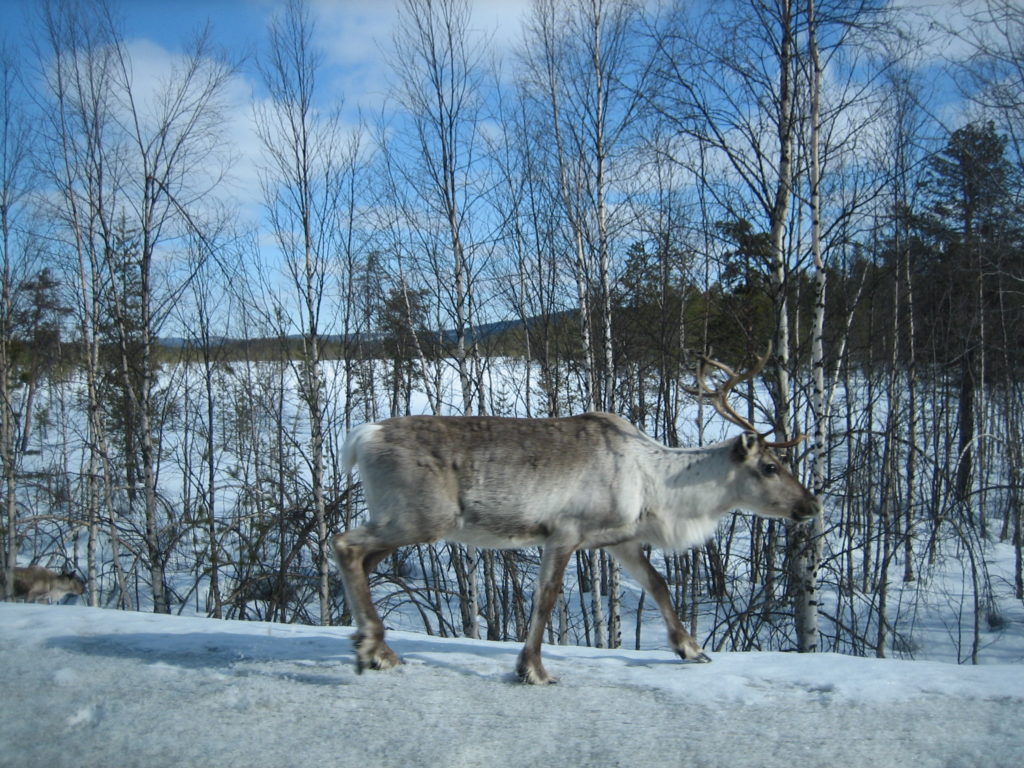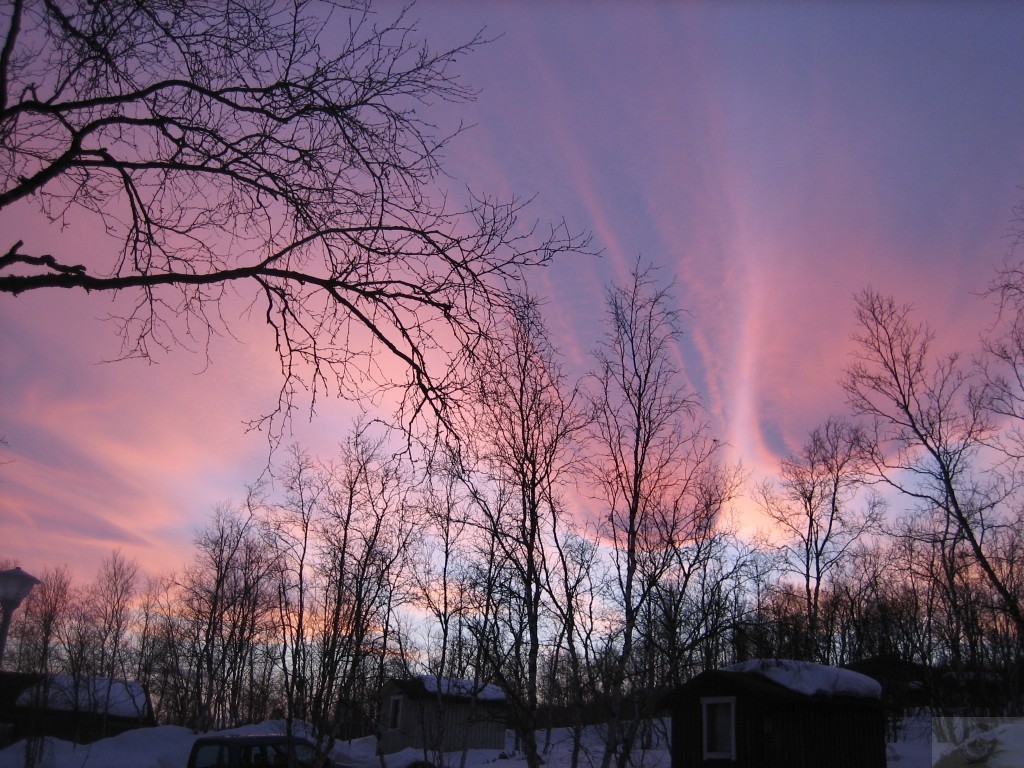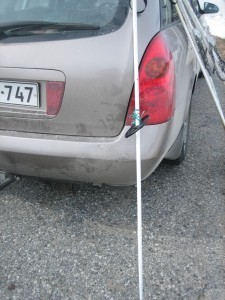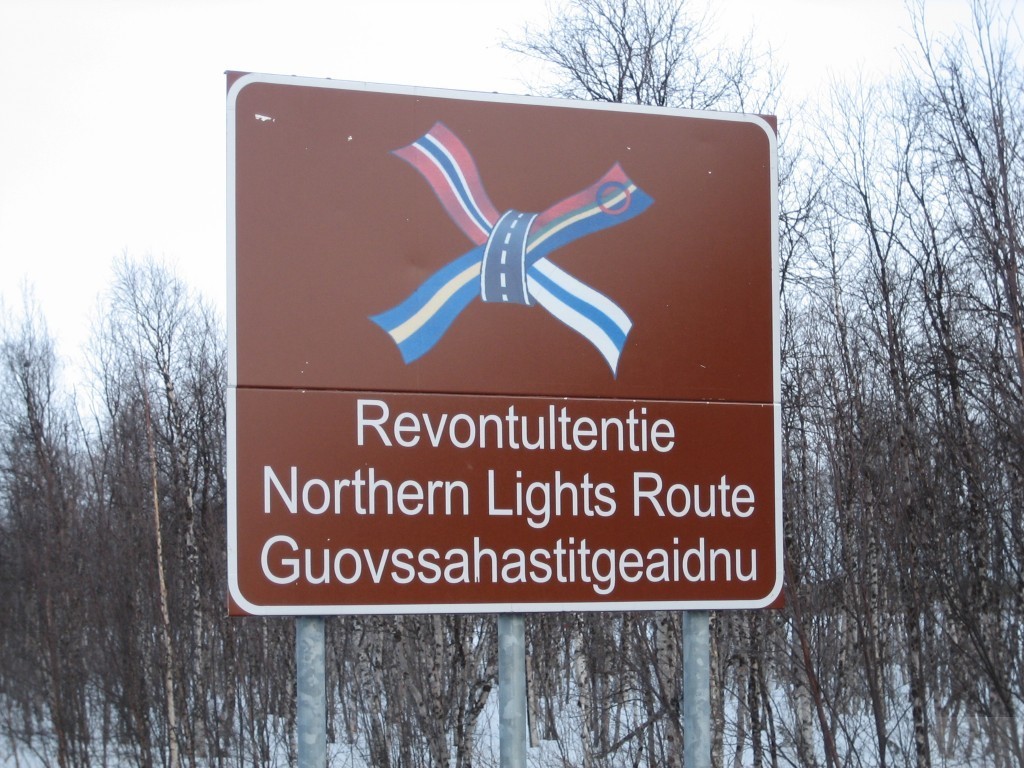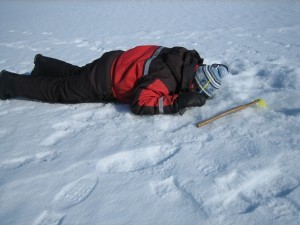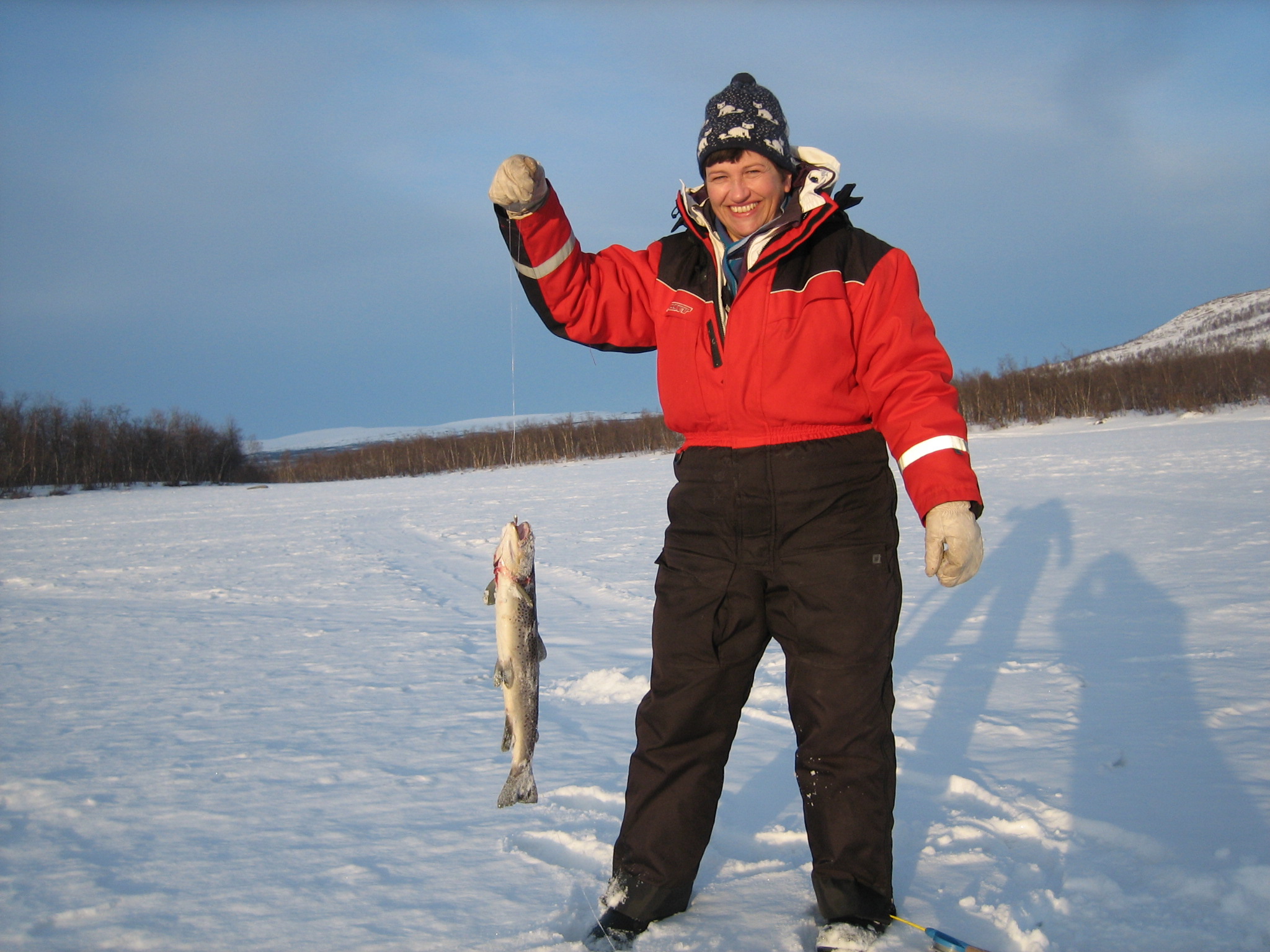If you arrive too early to the fishing area the fish are not awake; they still have the calm winter in their bodies. When spring arrives the fish wake up and start to move around searching for something to eat. The possibilities for you to get a catch will then increase. Last year (2017) the spring was almost as late as this year and our expedition was then not as successful as we expected. Our expectations for this year´s expedition were not too high, either.
One thing we found out just before starting driving towards the Upper North was the fact that there was not as much snow as in Rovaniemi. At the time there was 72 cm of snow in Rovaniemi and 61 cm in Kilpisjärvi. The nice lady in the reception of the cottage village Ropinpirtti could also tell us there was no crispy snow whatsoever…..The sun was shining bright from a blue sky and decreased the amount of snow every day. The snow conditions were cleary different from the ones in Rovaniemi.
The main thing is, that when we reach the ice there does not need to be any snow on the ice, but we need to have snow to ski on on the way to the fishing place. The start was really challenging. There was around half a meter of snow that did not carry you. This is a picture of the way we used to ski previous years. Completely impossible to take this route this year; too much big stones.
The only possible route was situated a bit further away, but we had to choose that. Snow is smoother than stones, anyway. So we struggled through the smooth snow for more than an hour.

Once on the ice we started fishing. It was a wonderful feeling to be on the good old ice-fishing spot again after one year of waiting. The hole-maker started his job; there was around 70 cm of ice except for the areas near the two rapids that are in both ends of the area on the river. The ice was thinner there.
It did not take too long for me to catch my first fish. It was a harjus. Good size and good activity in the fish, promising. This first evening we caught some pretty nice fish and that was promising.
Early the next morning out on the ice again. The ski track gets harder the more we use it, but still no crispy snow. The sun was shining again, got a lot of good sized fish.

The days sitting on the ice did not feel long at all. There was always something happening. In the morning, I could hear the grouses “playing” around on the shore. The wooper swans flew over, singing. I also heard the first cranes’ arrival to the fells. The wooper swan is the national bird of Finland and I love the sound of it when it first return back from its winter residence. The wooper swan is one of the first migration birds to return to Lapland in spring. I get cold shivers as I hear the wooper swan for the first time. These swans were not the first ones I heard. They were out flying looking for open waters. The little white-throated dipper was also singing and diving in the rapid.
Every day we had a bread with log fire and fried sausages and other delicacies. But sometimes the pause was postponed because the fish was active all day long and it was hard to leave the ice for even a moment.


The third morning there was finally some crispy snow and the way from the car to the ice was decreased by half a kilometer. It was so easy, you could go skiing anywhere and the snow was hard because of the low temperatures during the night. After a sunny day we needed to use our previous ski track to get up from the ice again, because the sun makes the snow smooth again. But we were lucky to have crispy snow-mornings during the rest of our stay.
So after five days of fishing, we could state the fact that this year was very successful; the weather was just perfect, the fish were active and we got some good sized fish and we had no injures. Now and then we got a big pike on the hook and sometimes the line broke and you lost your hook to the “big-mouth” himself. (We are not really interested in getting pikes on this expedition, because we can get that anywhere. On this expedition we want harjus, whitefish and of course a trout now and then, but mostly we do not get those.)

As we left the cottage village there was not much snow left. The spring arrived to the upper north of Finland and we returned to the south of Lapland, back to Rovaniemi.








